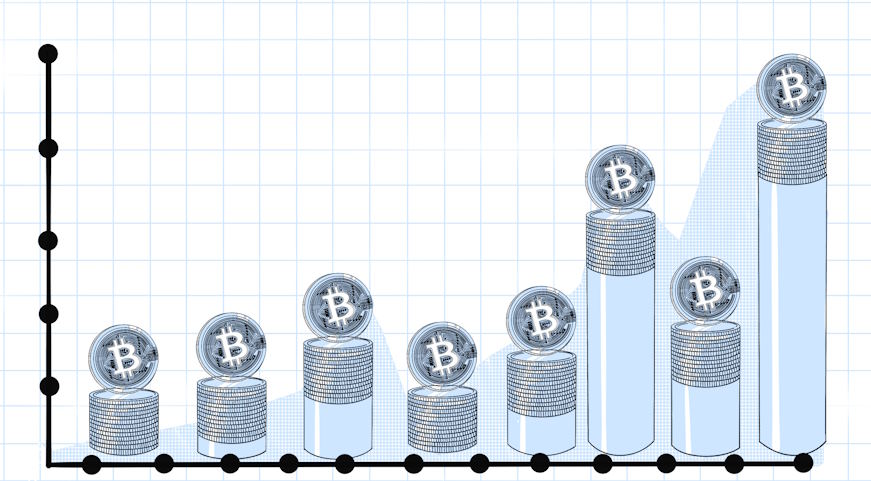The cryptocurrency market is a realm of constant innovation and unceasing evolution. New coins and tokens emerge regularly, each vying for attention and adoption. However, it is not just the inherent qualities of these digital assets that determine their success or failure. The platforms where these cryptocurrencies are traded, the cryptocurrency exchanges, play a pivotal role in shaping their destiny. Cryptocurrency listings, the process by which a new digital asset is introduced for trading on these platforms, are events that ripple through the market, leaving lasting effects.
Initial Listing Effects
Immediate Price Impact upon Listing
The listing of a cryptocurrency on a major exchange is a moment of anticipation and excitement within the crypto community. As the digital coin gets added to a trading platform, the immediate price impact is often the first thing that captures the attention of investors and enthusiasts. In many cases, prices experience a significant surge, driven by a surge in demand and trading activity. This price increase can be dramatic, often referred to as the “listing pump.”
However, not all listings result in price increases. Some cryptocurrencies may experience a less enthusiastic reception, leading to a more muted response or even a price decline. The initial reaction depends on various factors, including market sentiment, the perceived utility of the cryptocurrency, and the overall state of the crypto market.

Factors Affecting the Magnitude of the Price Change
The magnitude of price change upon listing can vary widely, and several key factors influence this variation. One of the primary drivers is the exchange’s reputation and user base. Listings on more prominent and reputable exchanges tend to attract more attention, resulting in more substantial price movements.
Additionally, the overall sentiment in the crypto market plays a crucial role. Bullish market conditions often lead to more significant listing pumps, while bearish market sentiments can dampen the enthusiasm around a new listing. The specific features and use cases of the cryptocurrency being listed also impact its price reaction.
Case Studies of Notable Cryptocurrency Listings
To illustrate the diverse range of outcomes associated with cryptocurrency listings, it’s worthwhile to explore some notable case studies. For instance, the listing of Bitcoin (BTC) on the CME Futures market in December 2017 led to significant price appreciation. In contrast, the listing of Bitcoin Cash (BCH) on Coinbase in December 2017 sparked controversy and volatility.
In recent years, we’ve seen new and innovative cryptocurrencies like decentralized finance (DeFi) tokens gaining attention upon listing, with projects like Uniswap (UNI) and Compound (COMP) experiencing rapid price surges. These case studies highlight how different cryptocurrencies can elicit various responses from the market upon listing, underlining the importance of careful analysis and due diligence for both investors and traders.
Market Manipulation and Pump-and-Dump Schemes
Vulnerabilities in Cryptocurrency Markets
Cryptocurrency markets, while promising in many ways, are not immune to manipulation and fraudulent schemes. They have vulnerabilities that bad actors exploit to their advantage. One of the primary vulnerabilities is the lack of regulation and oversight compared to traditional financial markets. With relatively lax scrutiny, the crypto space becomes an attractive playground for market manipulators.
Additionally, low liquidity in some smaller cryptocurrencies and a highly speculative nature create an environment where price manipulation can thrive. Inadequate investor education and a significant influx of inexperienced traders further exacerbate these vulnerabilities.

How Listings Can Be Exploited for Manipulation
Cryptocurrency listings, while significant events for genuine projects, can also be exploited by manipulators. When a new coin gets listed on a major exchange, there’s often a flurry of trading activity and price volatility. This volatile environment provides opportunities for manipulators to artificially inflate the price (pump) and then swiftly sell off their holdings (dump), leaving unsuspecting traders with substantial losses.
Manipulators may use coordinated social media campaigns, false news, and other deceptive tactics to create a hype around a newly listed cryptocurrency. This artificial buzz drives up demand and prices, luring in unsuspecting retail investors before the manipulators execute their exit strategy, crashing the price.
Regulatory Efforts to Combat Manipulation
Recognizing the need for market integrity, regulators worldwide have started to take action to combat manipulation in the cryptocurrency space. They are implementing stricter rules and oversight on exchanges and trading activities. These measures include increased know-your-customer (KYC) and anti-money laundering (AML) requirements, as well as improved surveillance and reporting mechanisms.
Furthermore, regulatory authorities are working on implementing rules to prevent fraudulent schemes, especially pump-and-dump operations. While the crypto space is still relatively nascent in terms of regulation, the growing awareness of these issues and the efforts to address them are steps towards a safer and more reliable crypto market for all participants. However, investors and traders should remain cautious, conduct thorough research, and exercise due diligence to protect themselves from potential manipulative activities.
